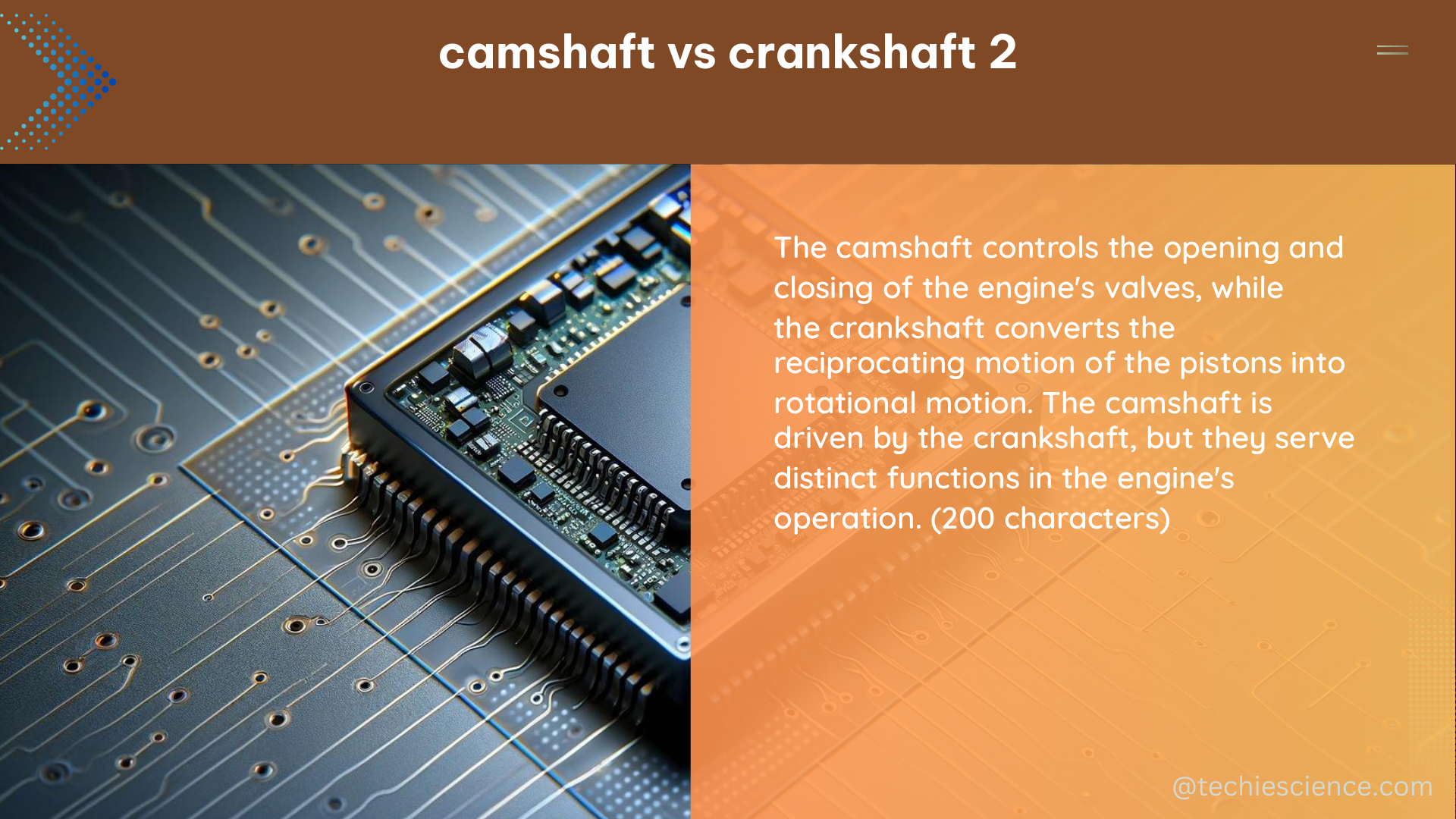The camshaft and crankshaft are two critical components of an internal combustion engine, each performing distinct functions while working in harmony. The camshaft, located in the engine’s “top end,” controls the opening and closing of engine valves, allowing air and fuel to enter the combustion chamber and exhaust gases to exit. Meanwhile, the crankshaft, situated in the “bottom end,” converts the up-down motion of the pistons into rotational motion, generating the engine’s power.
Camshaft: Design and Function
A camshaft consists of egg-shaped “cams” that open and close engine valves, with one cam per valve in a modern internal combustion engine. The shape and size of the cam lobes determine the extent and duration of valve opening, which can be optimized for specific engine performance characteristics.
Single-Cam vs. Multi-Cam Configurations
- Single-Cam Setup: Has only one intake and one exhaust valve per cylinder.
- Multi-Cam Configuration: Features four valves per cylinder (two intake, two exhaust), enhancing power output and efficiency.
The number of camshafts can also vary:
- Single Overhead Camshaft (SOHC): Has one camshaft located above the cylinder head.
- Dual Overhead Camshaft (DOHC): Features two camshafts, one for the intake valves and one for the exhaust valves.
The choice between SOHC and DOHC designs depends on factors such as engine size, performance requirements, and manufacturing considerations.
Crankshaft: Design and Function

The crankshaft, located in the engine’s “bottom end,” harnesses the immense force of combustion by pushing pistons downward, causing the crankshaft to rotate. This rotation serves as the engine’s primary power source.
Crankshaft Components and Specifications
- Crankpins: The offset portions of the crankshaft that connect to the connecting rods.
- Crankshaft Journals: The cylindrical surfaces that rotate within the engine’s main bearings.
- Crankshaft Throw: The distance between the centerline of the crankpin and the centerline of the crankshaft.
- Longer throws result in greater piston displacement and higher torque output.
- Shorter throws are better suited for high-revving engines, as they reduce the stress on the connecting rods.
- Crankshaft Counterweights: Offset weights that help balance the crankshaft’s rotational forces and reduce vibrations.
The crankshaft’s design and specifications are crucial in determining an engine’s power, torque, and overall performance characteristics.
Camshaft and Crankshaft Synchronization
Camshafts and crankshafts are interconnected via timing chains, timing belts, or mesh gear sets, ensuring precise synchronization. Proper indexing, or alignment to manufacturer specifications, is crucial for optimal engine performance.
Timing Chain vs. Timing Belt
- Timing Chain: More durable and longer-lasting, but can be noisier than a timing belt.
- Timing Belt: Quieter, but requires more frequent replacement (typically every 60,000-100,000 miles).
Proper maintenance and replacement of timing components are essential to prevent engine damage or failure.
Maintenance and Longevity
Timing belts, chains, and gears require periodic inspections and replacements, as specified in the owner’s manual. Neglecting these components can lead to engine damage or failure.
Consequences of Timing Component Failure
- Timing Belt Failure: Can result in valves colliding with pistons, causing catastrophic engine damage.
- Worn Timing Chains or Gears: Can lead to misfiring, poor performance, or even engine seizure.
Regular maintenance and timely replacement of timing components are crucial for ensuring the longevity and reliability of an engine.
Conclusion
The camshaft and crankshaft are integral components of an internal combustion engine, working in tandem to ensure smooth operation and optimal performance. Understanding the design, function, and synchronization of these critical engine parts is essential for maintaining and troubleshooting engine issues. By following the manufacturer’s recommended maintenance schedule and addressing any timing-related problems promptly, you can help ensure the long-term reliability and performance of your engine.
References:
- Camshaft vs. Crankshaft: What’s the Difference?
- Crankshaft and camshaft sensor readings wildly different
- Crankshaft and Camshaft Out of Sync – Dodge Durango Forum
- Looking at Cam and Crank Position Signals to Verify Timing (Good …)
- Cam crank sensor mismatch

The lambdageeks.com Core SME Team is a group of experienced subject matter experts from diverse scientific and technical fields including Physics, Chemistry, Technology,Electronics & Electrical Engineering, Automotive, Mechanical Engineering. Our team collaborates to create high-quality, well-researched articles on a wide range of science and technology topics for the lambdageeks.com website.
All Our Senior SME are having more than 7 Years of experience in the respective fields . They are either Working Industry Professionals or assocaited With different Universities. Refer Our Authors Page to get to know About our Core SMEs.